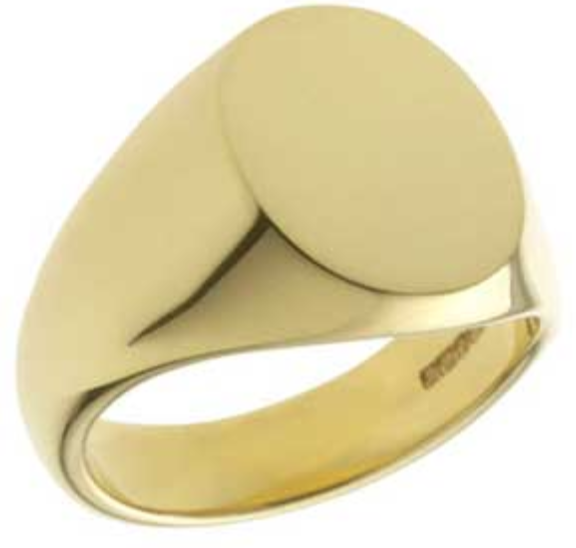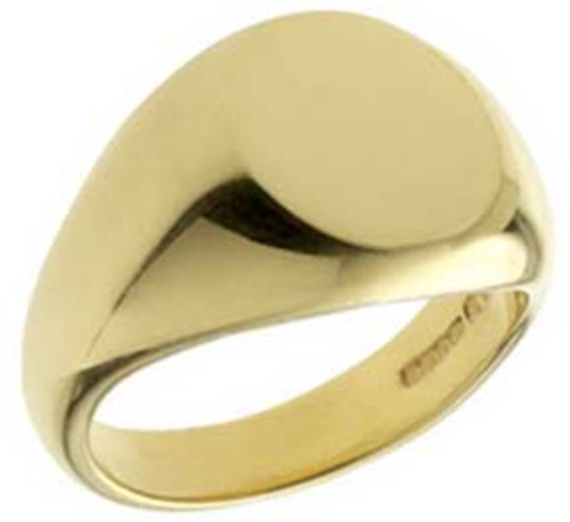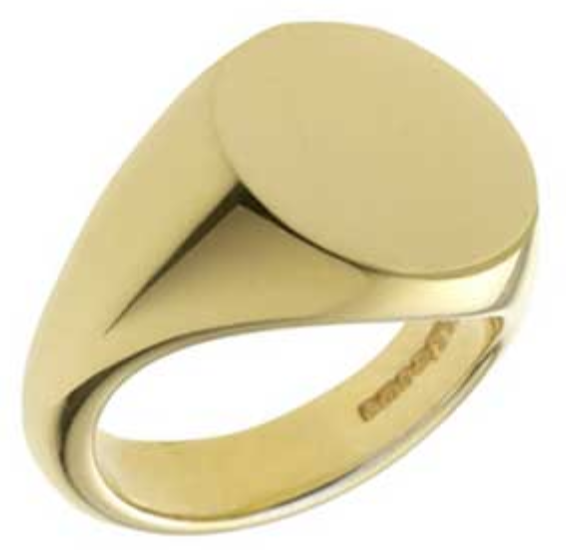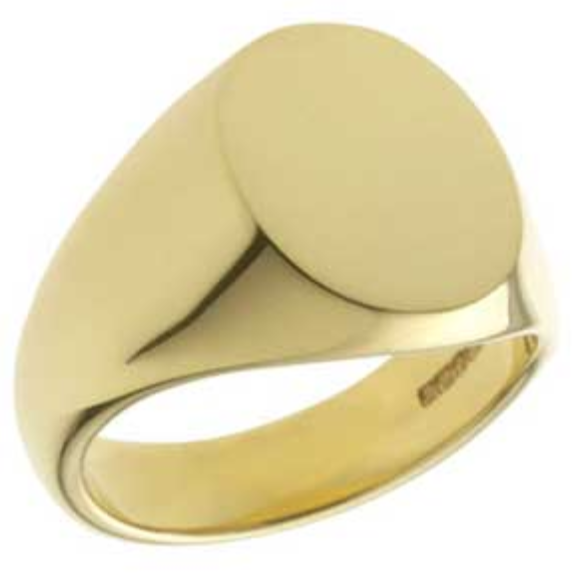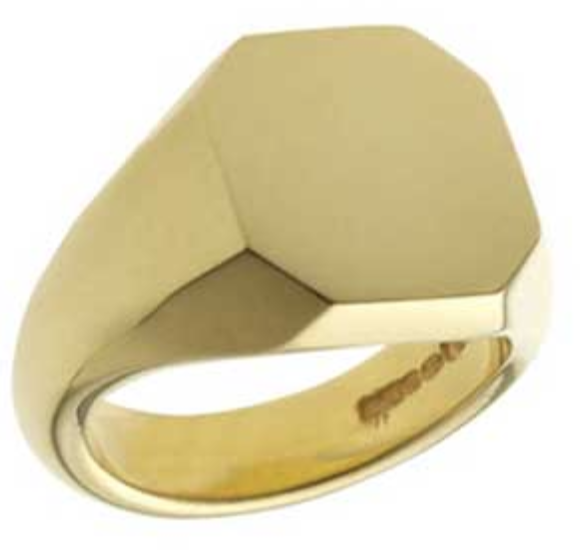A few weeks ago, I shared my dream of adding a personalized signet ring to my jewelry collection for my 31st birthday. In that post I outlined why I wanted to add this classic piece to my jewelry box and what went into my decision to work with the incredible Ruff's Signet Rings on such a special project. If you missed that post, you can read it here.
In today's post I'm going to delve a little deeper into the process and share a bit about the different sizes, shapes and materials that are available for signets and my personal choices for each.
AVAILABLE SHAPES
When it comes to signet ring shapes, I thought there were only 2 obvious options - round and square. As I delved deeper and learned more about the endless possibilities, I found that there are actually a variety of shapes and sizes ranging from round to octagon and everything in between. Though I'm sure you can find a craftsman capable of casting your signet into any shape you like (I've even seen hearts!), for the sake of this post and my purposes I'm only going to focus on the 6 shapes that Ruff's offers. Below, I've outlined the design points for each shape.
From L to R: Straight Oval / Bulbous Oval / Round / Cushion / Octagon / Oxford
STRAIGHT OVAL: First up is straight oval. This shape is far and away the most classic signet shape available and for obvious reasons, is one of Ruff's most popular. In their own words, this shape is "a classic oval that is tailored to an individual’s engraving - it could therefore be a taller oval or a fatter oval to perfectly encompass the particular device. This minute adjustment to dimensions applies to all shapes, of course. It’s the most popular because the signet ring is a very traditional product and shouldn’t be all singing, all dancing with bells on it. The straight oval is undoubtedly the conservative ring of choice." Based on this description alone, I bet you can guess which design I've decided to go with.
BULBOUS OVAL: Next up is the bulbous oval which is best characterized as “chunky”. In Ruff's own words: "Over the years I have deliberately chosen to use this word because it either confirms a person’s choice or deters! The bulbous oval has gold bulked up on its shoulders and is therefore a much heavier ring than its counterpart, the straight oval. It is a good illustration of a shape that cannot be stamped out."
ROUND: When I started on this journey, I thought round was the obvious choice for a classic signet and in certain instances, this is the case. By Ruff's own explanation, "inevitably there are some devices that beg to be framed by a circle rather than an oval or square." According to Ruff's this is "potentially a cumbersome looking ring but, with the right tweak here and there, this becomes an elegant alternative."
CUSHION: When it comes to classic signet shapes, the cushion is one for the books. Based on Ruff's description, the cushion "comes second to the straight oval [and] is more subtle than either the round or the Oxford." Plus, it "was a favourite in the Victorian days - indeed the inspiration for its inclusion in the range."
OCTAGON: If you're looking for something a little less conventional, the octagon is a great option that Ruff's characterized in their earlier brochure as “a more modern shape for the Naughties” and lo and behold it’s now 2011! There is something new about the shape, though, and it is superb when set with a stone."
OXFORD: Although many engravings suit round shapes beautifully, some need a square frame and "the Oxford fills this role splendidly. By rounding the corners we present a ring that is not as stark as a square or rectangle proper but still gives the device the edge it demands. It is a heavier ring too."
THE AVAILABLE METALS
Like most jewelry, signets are available in a variety of metals to suit your personal preferences and budget. The standard offerings are sterling silver, platinum, gold plate and solid gold, and given my personal preference of solid gold, I'm going to focus on that for the sake of this post. Given that pure gold is 24 carats, and thus 24 parts pure gold, any carat below that is made up of 9, 12, 14, 18 etc. parts pure gold and other metals (typically copper, silver and zinc). These various mixtures contribute to the hue and durability of each, and it's important to understand their pros and cons in order to make the best decision for you. Below, I've embedded the specifics of the most common carats in order to help you decide which is best for you and your needs.
- 10 Carat Gold: The first thing to note about 10ct gold is that it contains more alloy than gold with 41.7% gold and 58.3% alloy. The minimal amount of gold found in 10ct gives it a slightly paler hue than larger carats, but it's difficult to see these differences at first glance. Also, 10ct can tarnish more quickly than larger carats but is also more durable than these larger carats.
- 14 Carat Gold: 14ct gold seems to be the most popular because it strikes a lovely balance of hue and durability (though if you get a well-made 18ct there should be little difference in durability between it and 14). As the name suggests, 14ct gold contains 58.5% gold and has a beautiful yellow gold color that is harder to distinguishable from 18ct than it's 10 and 12 carat counterparts.
- 18 Carat Gold: The next carat I want to discuss is my personal favorite for it's incredible god hue and durability. 18ct gold consists of 75% gold and has the highest concentration of gold among the most commonly sold golds on the market - it's unlikely to find carats higher than 18 because they are far to delicate for everyday wear. Like I mentioned above, 18ct gold has a tendency to be softer than 14ct gold and in some instances it can show wear and tear more quickly than lower carats but it has the loveliest, richest gold hue that I think is well worth needing a few more polishes in your lifetime. For reference, my beloved David Yurman stack that I wear on my right ring finger is 18 ct gold and my vintage bracelet that I wear on my right wrist is 14ct gold.
A NOTE FROM RUFF'S TO GUIDE YOUR DESIGN CHOICES
Now that we've reviewed the shapes and materials that you can choose for your signet, I wanted to have Ali from Ruff's weigh in with her recommendations in order to help guide both my own personal decision and your own.
Q: Hi Ali! I'm so excited to get your insight on a few stylistic points today. Let's start things off with the shapes you offer. When I first reviewed the shapes, I had a hard time differentiating between the straight oval, bulbous oval, round and cushion. Can you share some top line differences between these four?
A: A straight oval is the most popular choice, elegant and traditional. A bulbous oval is far more substantial with lots of weight on the shoulders, this style is exclusive to Ruffs. Round is as you’d expect a perfect circle. Finally cushion is a square shape with rounded shoulders. All of these can have dimensions to suit your needs. Shoulders can be tapered, shanks made heavier etc.
Q: I know that certain engravings suit certain shapes better than others. How do you determine which shape suits each engraving the best?
A: It is normally quite apparent which shape will suit a crest or design and most customers will have worked this out for themselves. Something very portrait will sit nicely in a straight oval whereas a more landscape crest or perhaps double-crest will work better in a cushion. We’re always happy to have a sketch prepared if a customer is unsure what will work best and, indeed, advise based on experience.
Q: When it comes to selecting a carat for your signet, what do you recommend for a piece that will have both a rich gold hue and enough durability for reasonable everyday wear (no hard labor or construction projects)?
A: Carat of gold is very much a personal choice and we tend to guide customers as follows; 9ct is said to be harder wearing due to it’s lower gold content, it will be paler in colour and lighter in weight. At the other end of the scale you have 22ct this will have a very deep yellow colour and a significant weight, it would certainly be more prone to knocks and scratches but we feel this just adds character to a ring. In-between you have 14ct and 18ct both are good choices, one offering a harder metal and the other better clarity of colour. Cost will of course play a part too.
WHAT I'VE CHOSEN & WHY
Now I want to share a little bit about what I've chosen and why. For the sake of my personal signet, I knew I wanted a solid, yellow gold option in either 14 or 18 carat. My reasoning for choosing between these two is a mix of longevity and durability and given how happy I've been with my David Yurman stack in 18ct gold, I've decided to go with the same for my signet. I absolutely LOVE the rich gold hue of 18 ct gold and how it suits my skin tone and couldn't be more excited about having such a precious piece!
For the shape, I'm still making my final selection on the engraving (which will of course help guide my final choice) but I am very heavily leaning towards the ever classic straight oval. I love how this shape is prominent but not too ostentatious and I think it will suit my wardrobe and jewelry tastes for years to come. In the meantime, I'm busy studying everything I can find on signet ring engravings and I'm excited to share more about that with you in my third post in this series. Until then, thank you so much for stopping by!
